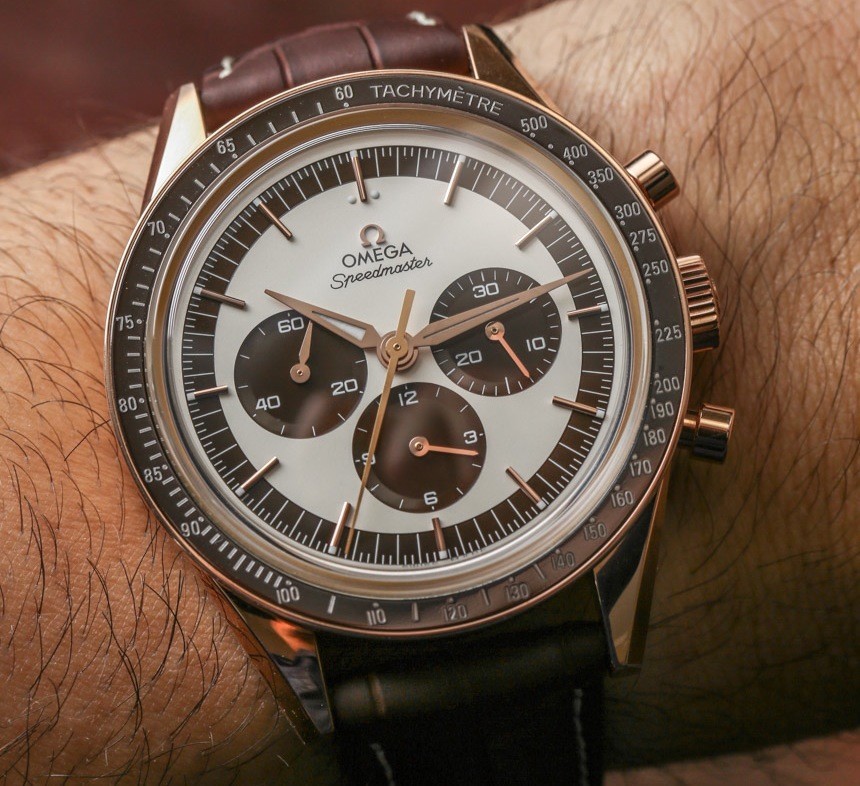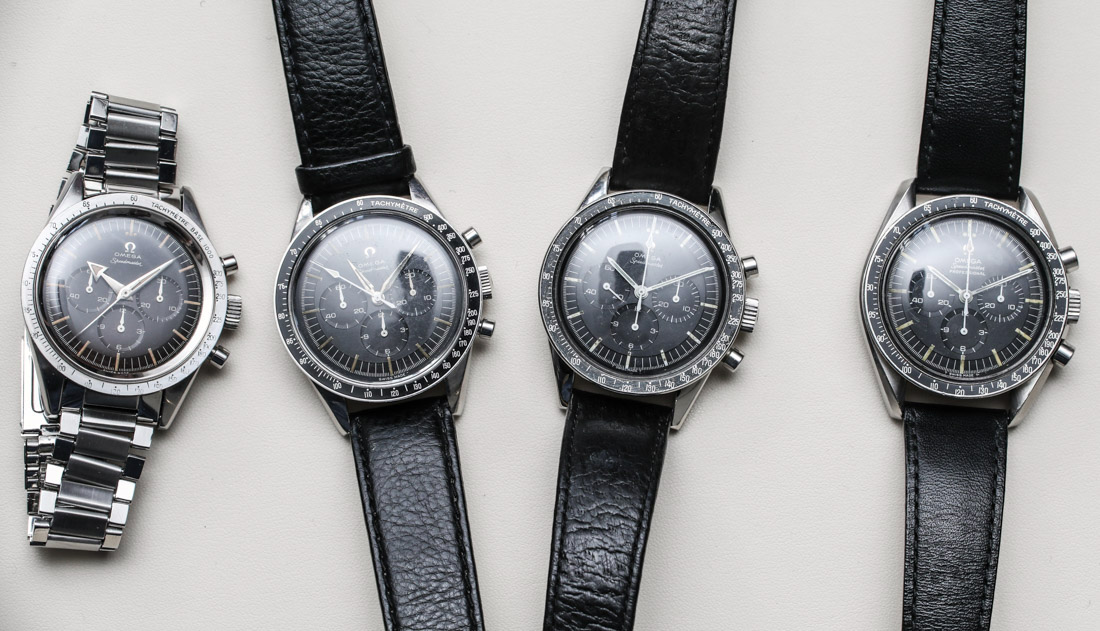
Among the most storied watches, the Omega Speedmaster holds a special position as the watch that’s been to the Moon and back – and a bunch of other places, as we shall soon see. While there is plenty of printed and online literature available to study for those who want to know all about the “Moonwatch,” it is exceedingly rare to be given a chance to go hands-on with some of the actual watches that have been through the historical events which have helped to create the remarkable popularity the Speedmaster enjoys today.
A few days ago, at Omega’s London event celebrating the notable 60th anniversary of the Speedmaster, we went hands-on with not one or two, but six incredible Omega Speedmaster watches that have truly been “out there.” Here’s every one of them telling their story.
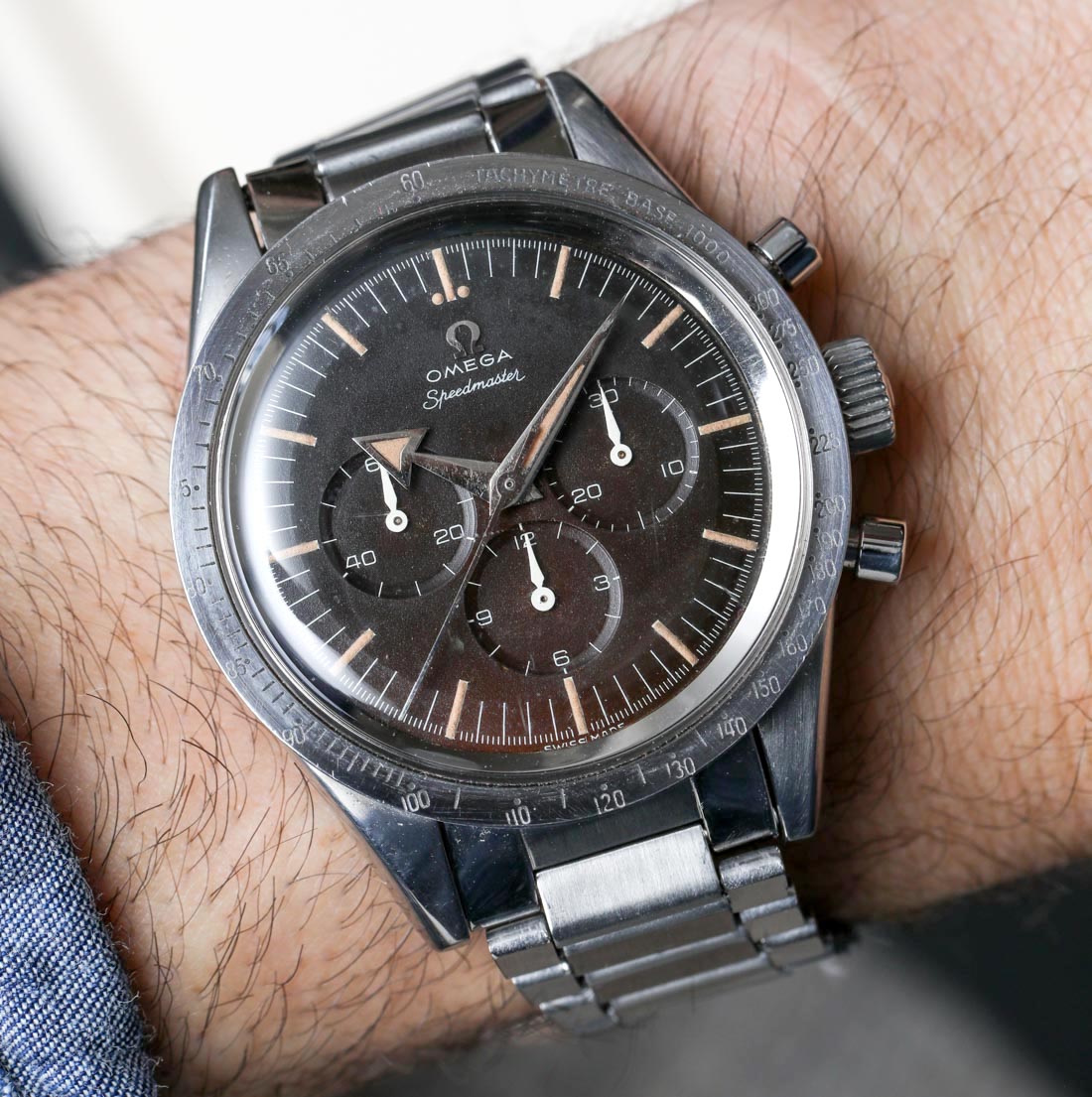
First Generation Omega Speedmaster CK 2915 (1957)
It all started rather inconspicuously in 1957, the year Omega introduced its “Professional” line of watches that included the first Speedmaster, the Seamaster 300, and the Railmaster. To see the trio together, check out our hands-on with the Omega 60th anniversary series here.
Omega says – and it makes sense – that they originally had not conceived the Speedmaster for extra-terrestrial use. Although it was in the very same year that the Russians successfully launched the first-ever satellite into space on October 4, 1957, it was not until much later, in 1965, that the first spacewalk happened – once again, achieved by the Russians, as Alexei Leonov spent 12 minutes and 9 seconds in the big vast unknown nothingness (cool story on that from Gizmodo here).
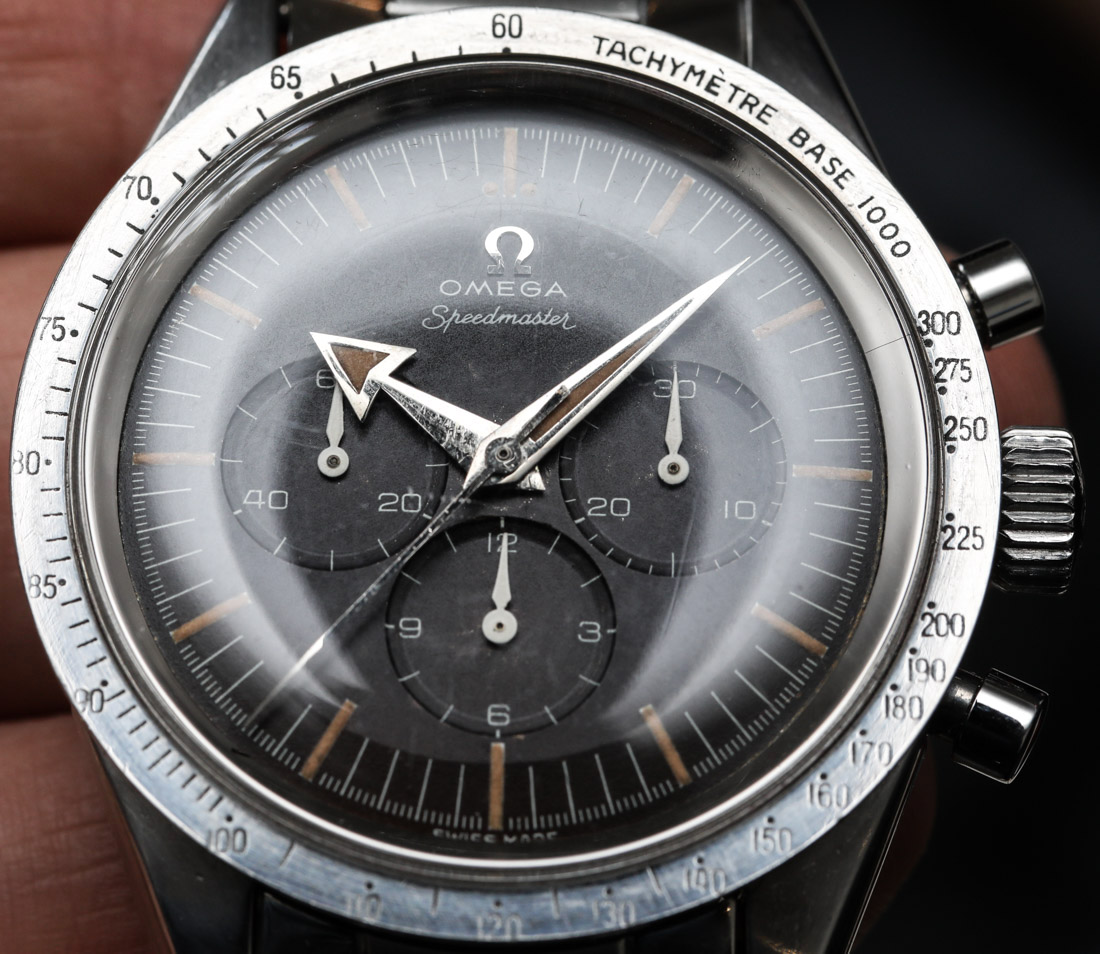
In the meantime, the Speedmaster had been set on its own course, as Omega heavily marketed it to car enthusiasts, motorists, and racing drivers. How? Well, did you know that the Omega Speedmaster CK2915, the first Speedmaster of them all (add Lord of the Rings narrator voice to that bit for added drama), was the first-ever watch to place its tachymeter bezel outside the dial and crystal? An almost laughably negligible “achievement” compared to what the Speedmaster would soon have to gloat about.
Still, the importance of the CK2915 is undeniable, as it was a strong enough beginning – thanks to its almost uncannily well-balanced, sporty, yet elegant looks and a heavy-duty 321 hand-wound chronograph caliber – to merit future updates to it. With its now-famed and highly legible “Broad Arrow” hands, plus excellent overall proportions and wearability, the Speedmaster collection was certainly off to a strong beginning.
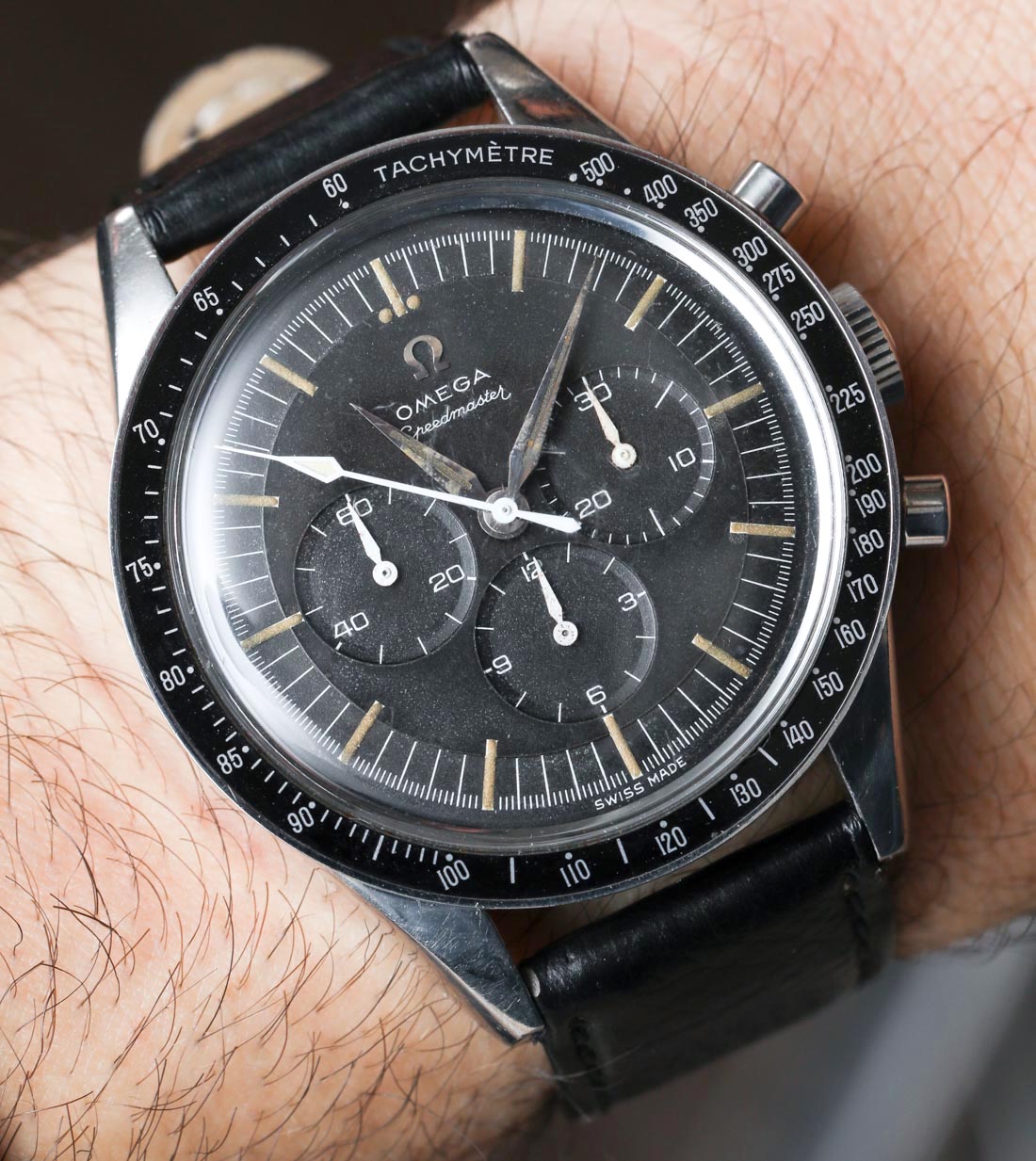
The First Omega In Space: 2nd Generation Omega Speedmaster CK 2998 (1959)
1959 saw the introduction of a revised, second generation version, the Omega Speedmaster CK 2998. It retained the symmetrical case and the hand-wound Caliber 321 from Lemania, but introduced a new “Alpha” design handset that replaced the “Broad Arrow” ones seen on the first model. The tachymeter bezel was also standardized in the famous black aluminum version still in use today.
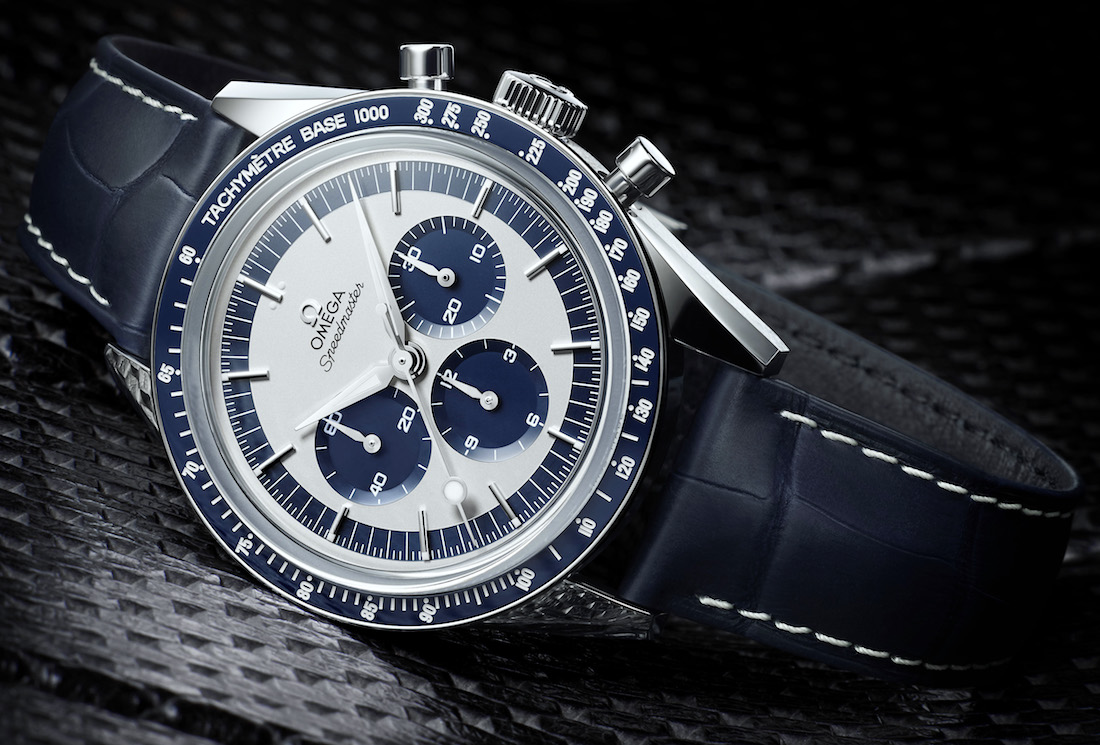
Omega’s CK 2998 tribute limited edition from 2016 with the Alpha hands but now with a blue panda dial.
More importantly, the CK 2998 was also the first Omega in space, as Omega explains: “The CK 2998 was the very model purchased by Mercury astronauts Walter “Wally” M. Schirra and Leroy G. “Gordo” Cooper in 1962 as their private watch. It was worn by Schirra during his Mercury-Atlas 8 (Sigma 7) mission, becoming the first Omega Speedmaster worn in space in October 1962, a full two years before NASA’s now-famous tests that led to the official selection of the Speedmaster for use in all of NASA’s manned missions.” It is here where we should note – since I presume some of you are asking yourselves the question – that the first watch ever worn in space was the one on the wrist of Yuri Gagarin who ventured into the unknown on April 12, 1961, after taking off from the Baikonur Cosmodrome in modern-day Kazakhstan. There is no official information on this, but he had most likely been wearing a Sturmanskie, a Soviet watch “brand” not sold to the public but reserved for soldiers at the time.
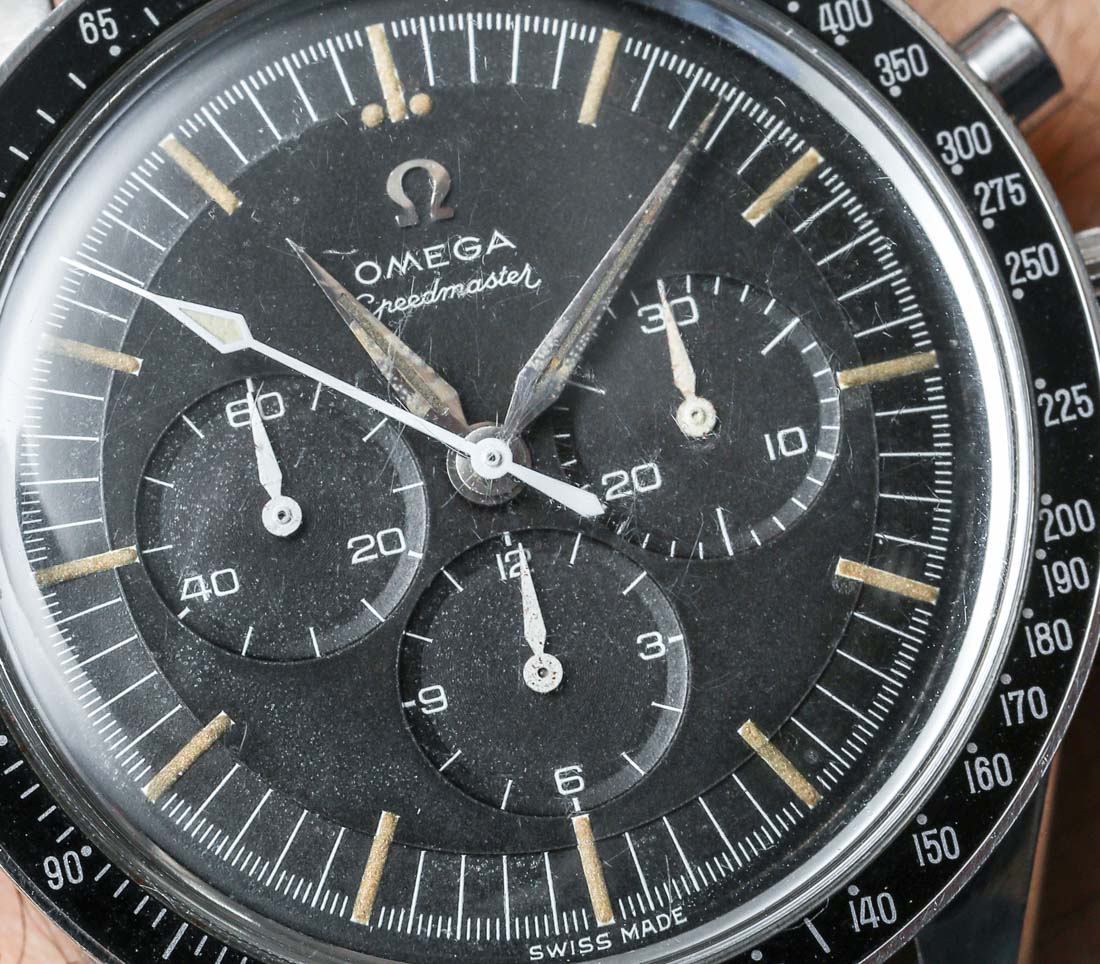
Today, the CK 2998 is one of the most collectible Speedmasters out there. Produced between 1959 and 1962, there aren’t many original ones around today in collectible condition with original parts, which sends resale value north of the $20k mark. Just look at the one Omega had on display: it had a lot of wear and tear – which arguably is part of the charm and patina of a vintage watch, if that’s your thing… And if it isn’t, you’ll have to hunt down a discontinued/sold-out steel or gold “FOIS” First Omega In Space produced more recently.
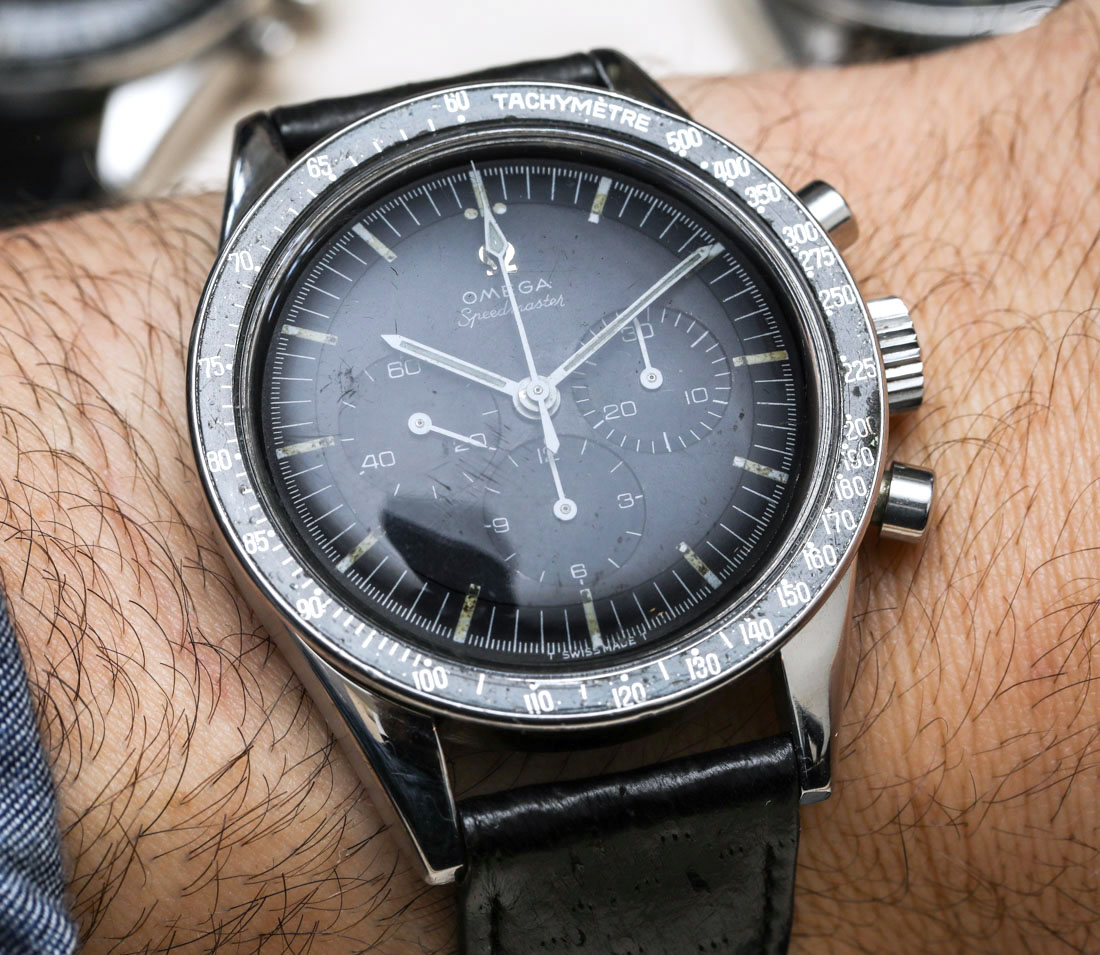
Qualified By Nasa: 3rd Generation Omega Speedmaster ST 105.003 (1963-1964)
The next development within the Speedmaster family, in Omega’s words, “was a decisive one.” Introduced in 1963 and still powered by the manual-wound Caliber 321, the 3rd generation Omega Speedmaster ST 105.003 is the exact model delivered to and tested by NASA. Responding to a request for “wrist chronographs” in October 1964, Omega’s North American agent supplied NASA with the required number of ST 105.003 Speedmasters, without knowing exactly what they would be used for – and, better still, without even informing Omega headquarters in Biel, Switzerland.
These watches, as well as models from other competing brands (Omega doesn’t specify, but they were from Rolex, Longines, and later from Bulova, even), were evaluated almost to destruction in a series of tests that can justly be described as the toughest trials a watch had ever endured.
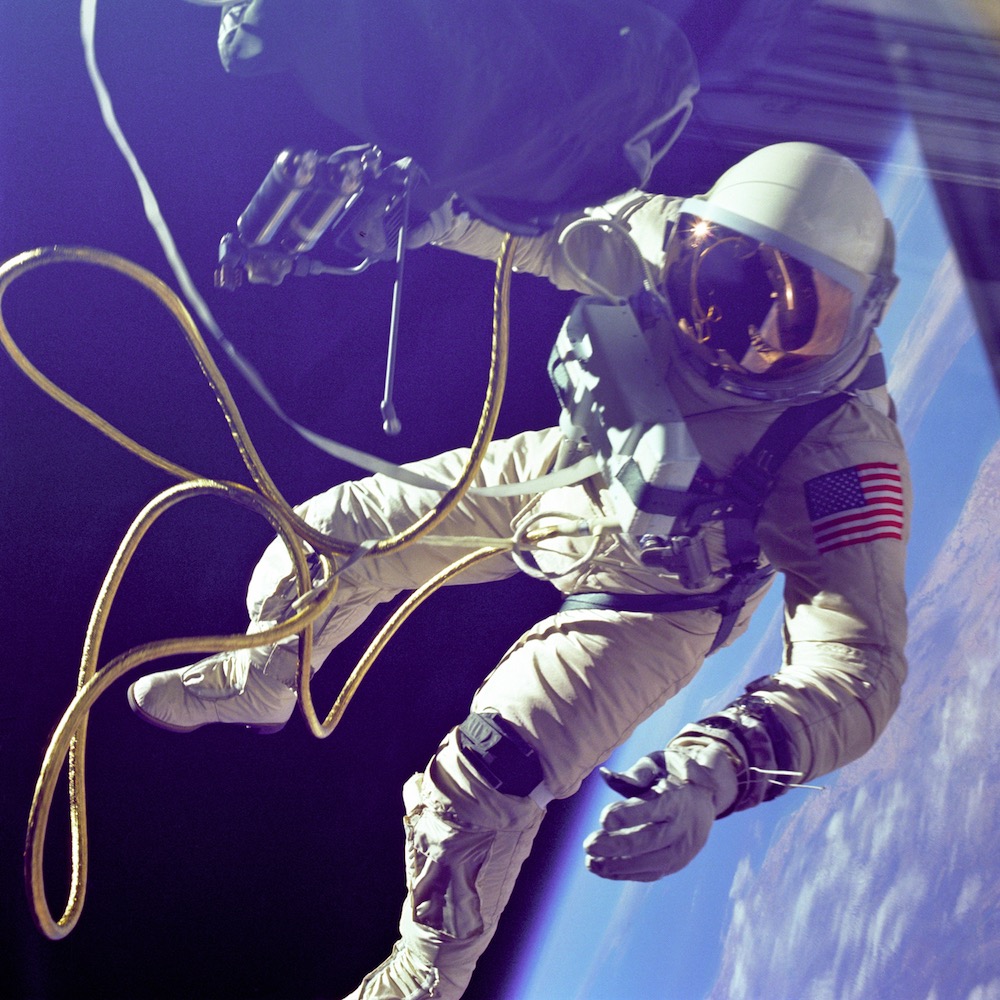
To give you an idea, it included: high and low temperature tests (two full days at 70 °C (158 °F), 30 minutes at 93 °C (199 °F), then 4 hours at -18 °C (-0.4 °F); ten 24-hour cycles at >95% humidity with temperatures ranging from 25 to 70 °C; corrosion tests; six 40 G shock tests in six directions, low and high pressure tests, vibration tests and even a sound test where the watches were “shouted at” at a deafening 130 decibels at frequencies from as low as 40 up to 10,000 Hertz for 30 minutes. Key signs of deterioration included the lume falling apart on the hands, as well as, you guessed it, the rate being affected… and yet, the watches had at last been officially certified by NASA.
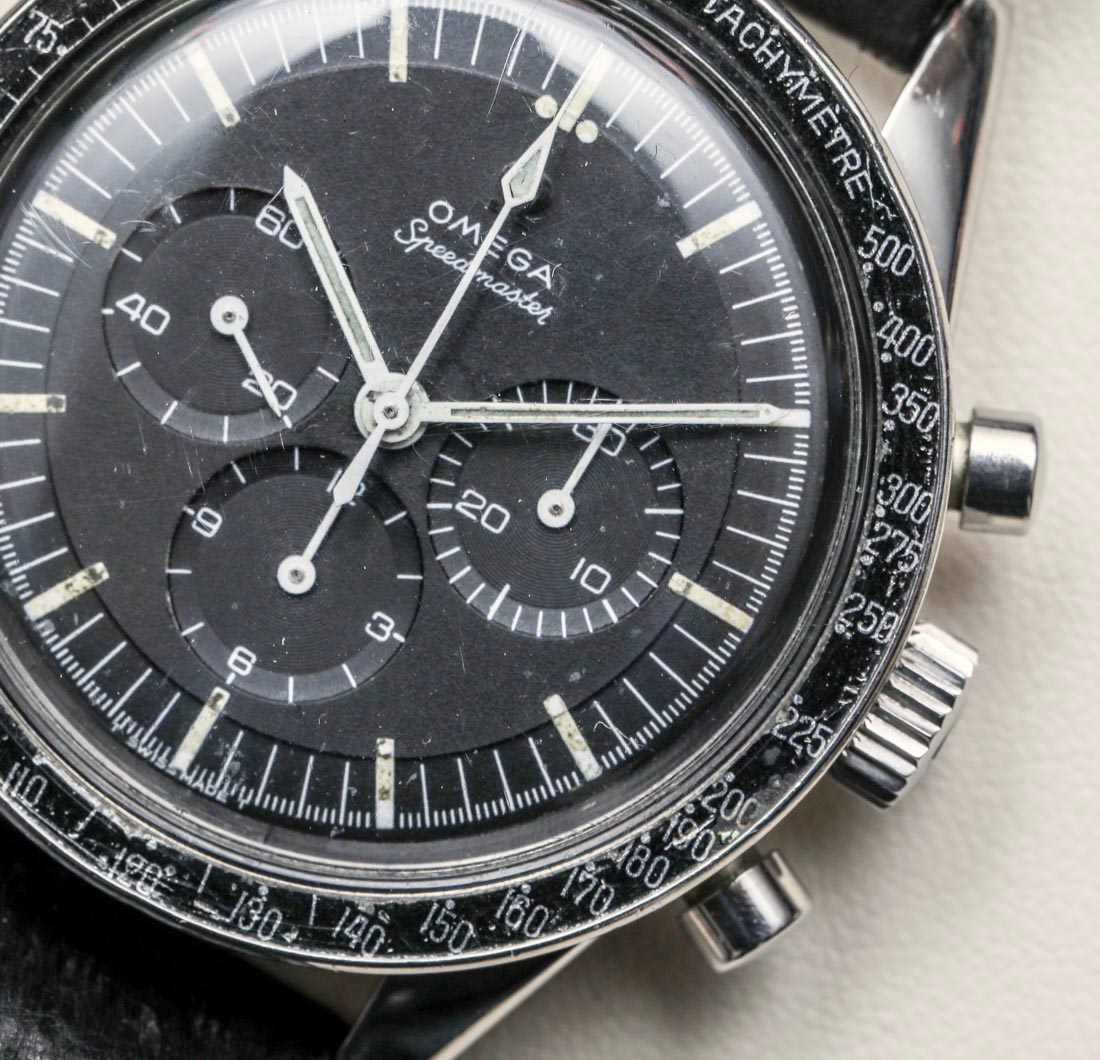
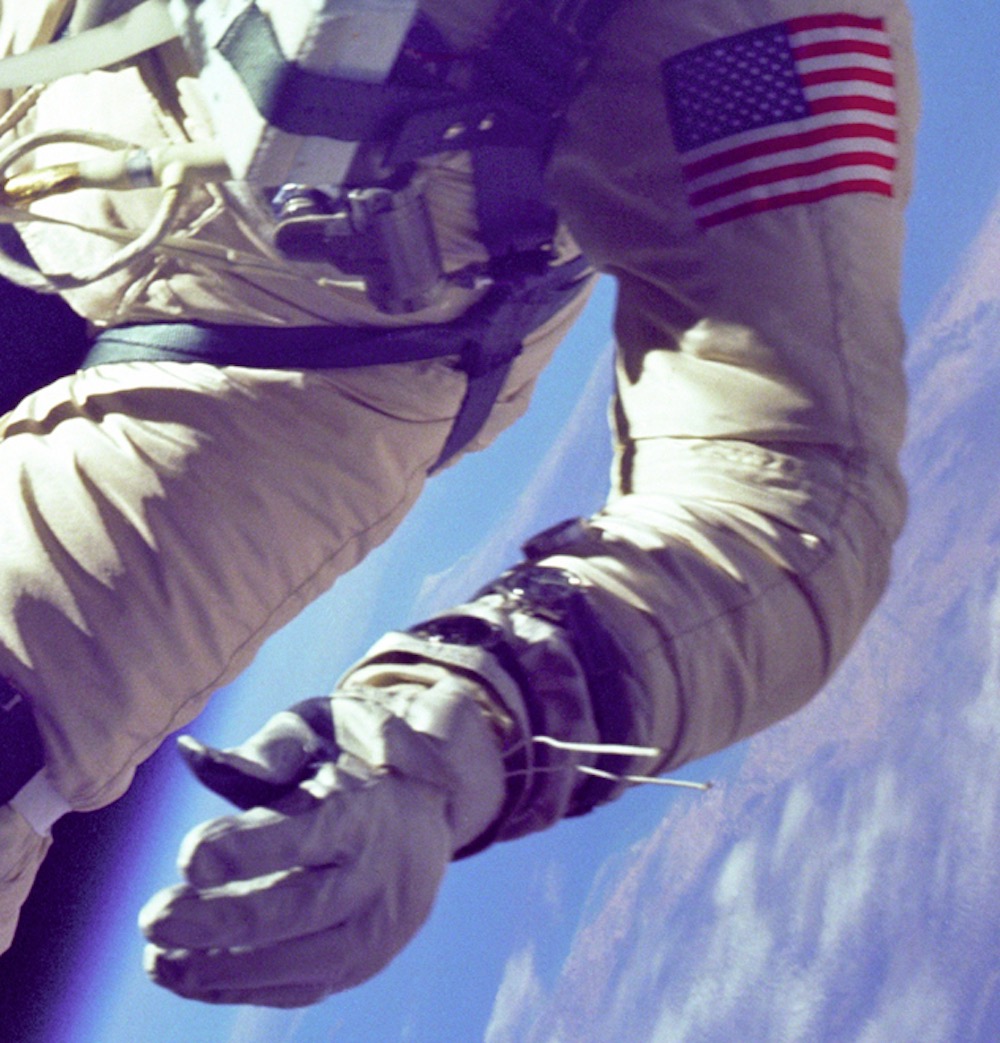
Edward White and the Omega Speedmaster ST 105.003 on America’s first EVA on June 3rd 1965, during the Gemini 4 mission.
As the Omega Speedmaster became “officially certified” equipment for NASA’s manned space program, NASA procured further examples of the ST 105.003 and officially equipped its astronauts with it. This model reached further fame when it was worn for the first time outside the space capsule: on the wrist of astronaut Edward White, this model became part of America’s first EVA (extra-vehicular activity, or, more plainly, “spacewalk”) on June 3, 1965, during the Gemini 4 mission.
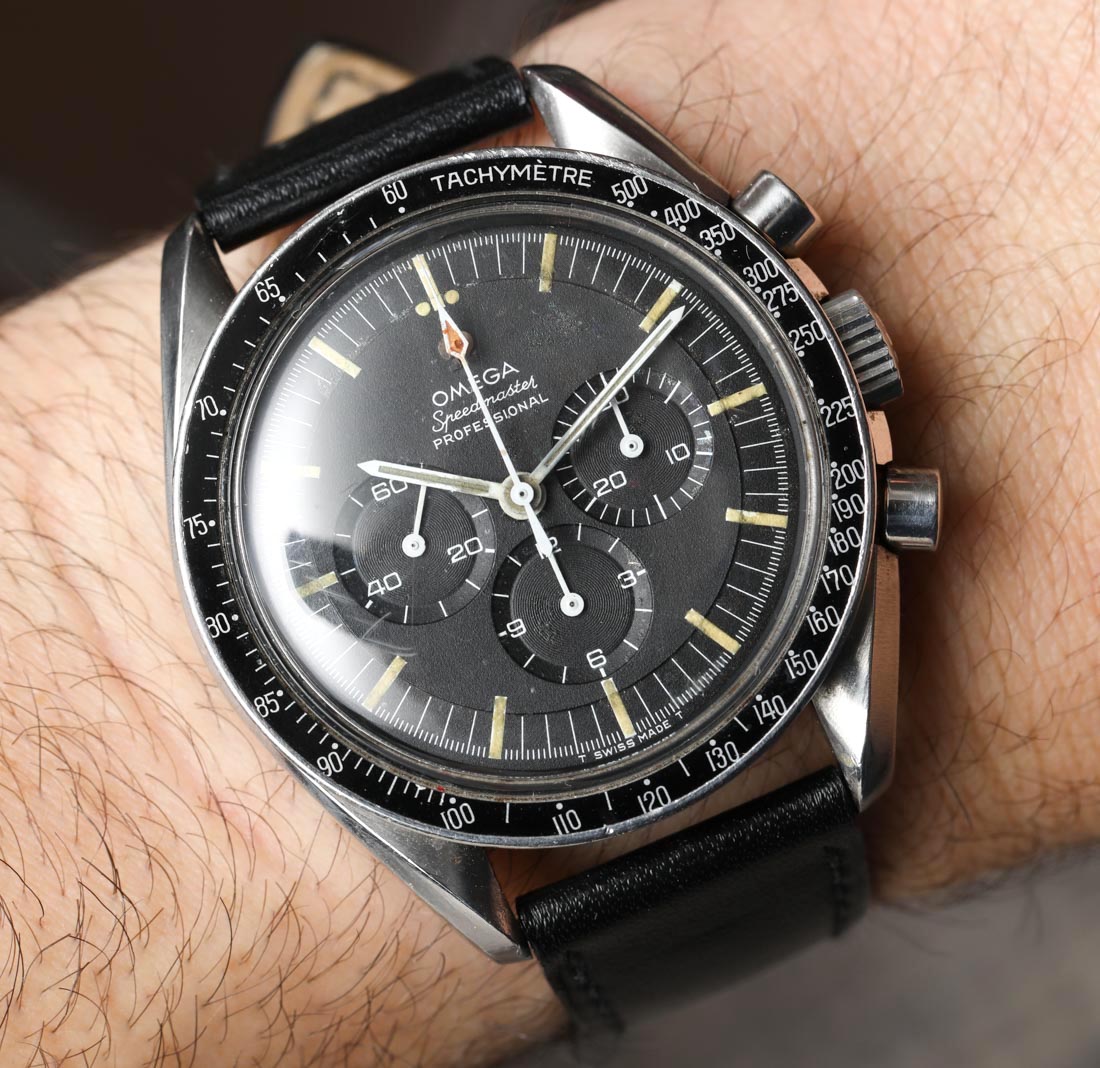
First Moonwatch: 4th Generation Omega Speedmaster ST 105.012 & ST 145.012 (1964-1965)
While Omega had no knowledge of what was going on over in Houston since NASA’s selection process was carried out without involving the respective companies’ headquarters, Omega was nevertheless evolving the Speedmaster. In order to offer additional protection to the chronograph’s pushers and its crown, the Speedmaster case was slightly modified: its right side was slightly enlarged, thus offering more protection and, as an unavoidable side-effect, a newfound, asymmetrical look.
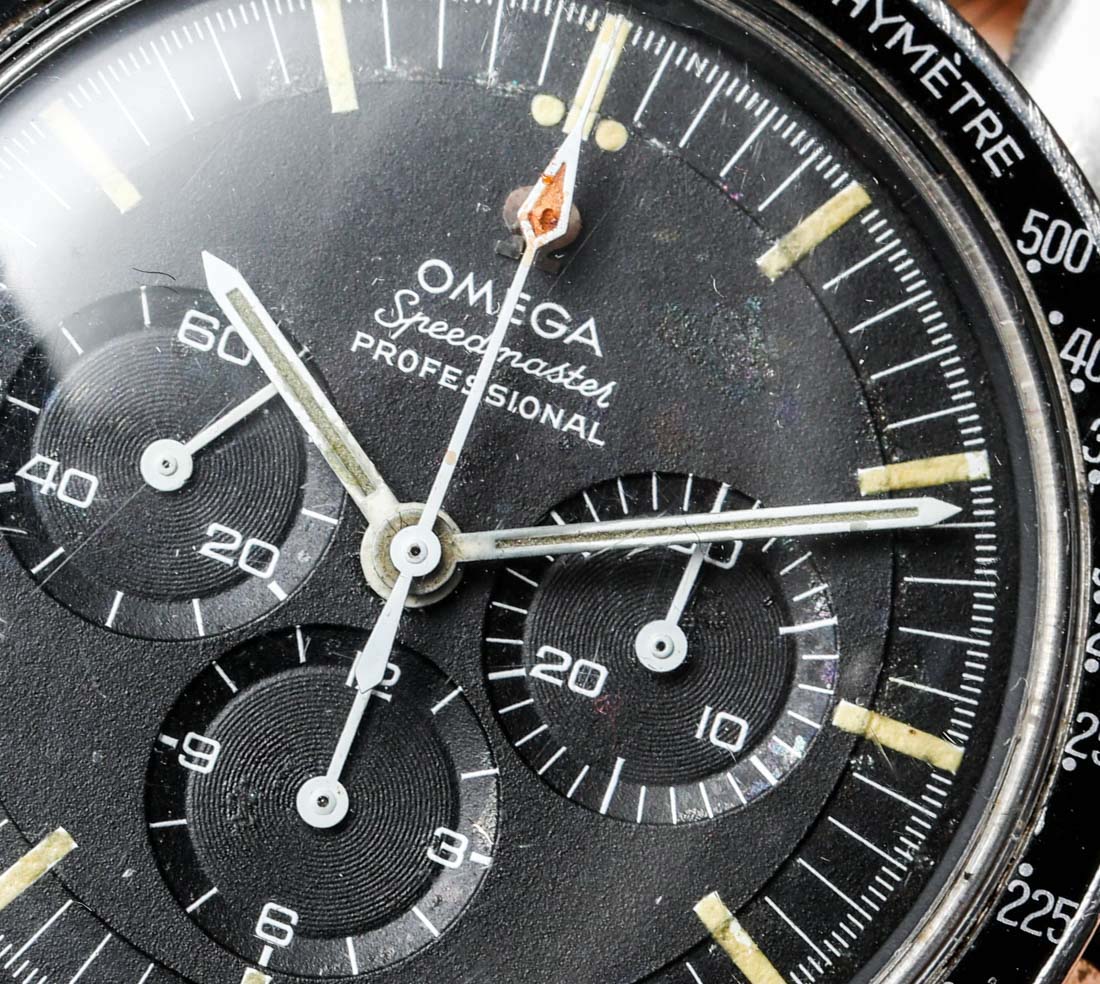
It was introduced to some select markets in 1964 with the model ST 105.012 that now also featured “Professional” on the dial, as it was at this point a prominent part of Omega’s professional line of watches that, as we mentioned above, they launched in 1957. Still powered by the same trusty movement, the Caliber 321, the model further evolved in 1967 into the reference ST 145.012, with the addition of a slightly improved method of attaching the pushers to the case. This model proved to be the last one to use the Caliber 321, the very movement that guaranteed perfect timing during all six lunar landings up to and including the last mission to land on the moon: Apollo 17.
Now, let’s take a quick look at that Caliber 321 we’ve been talking about all this time…

